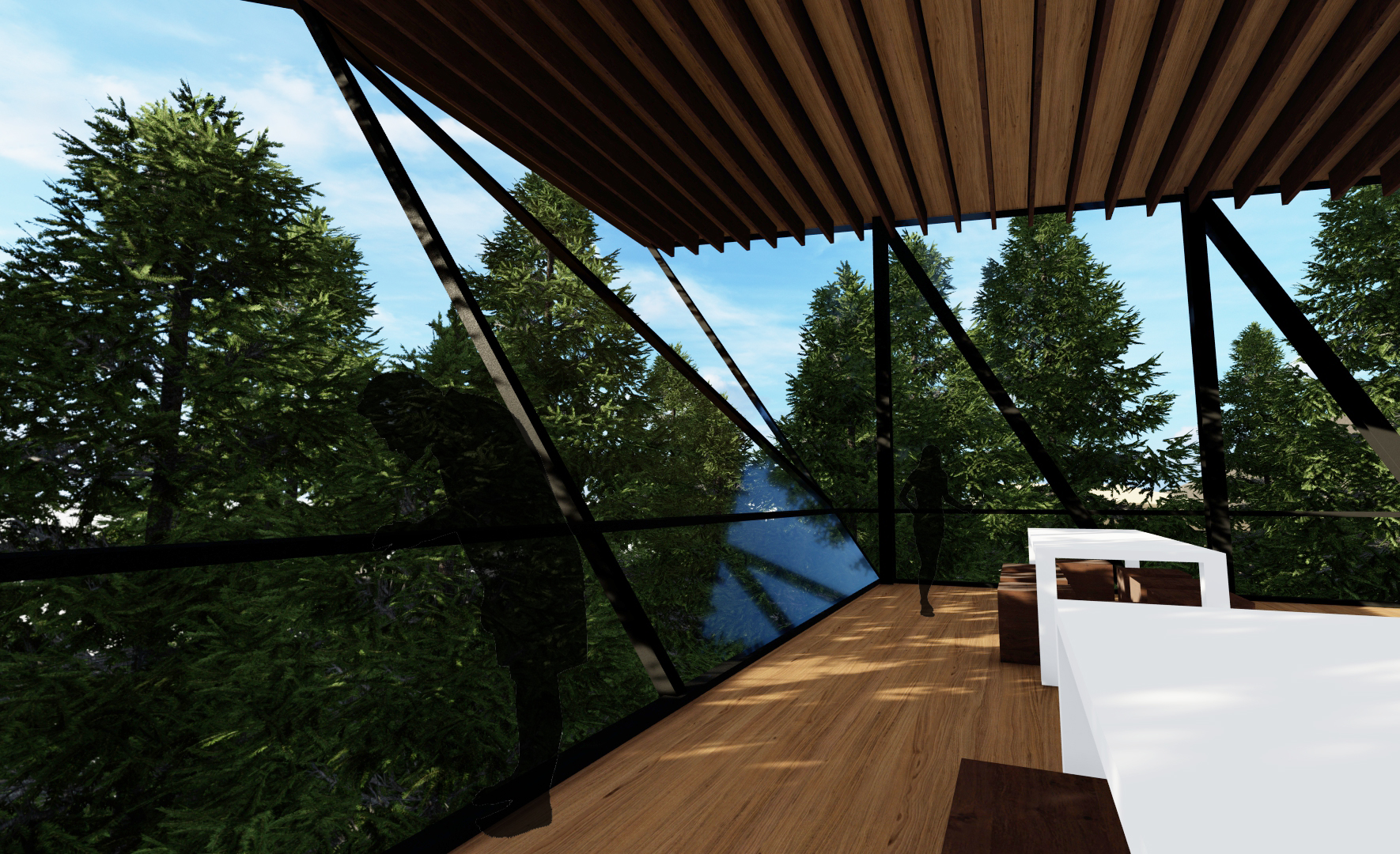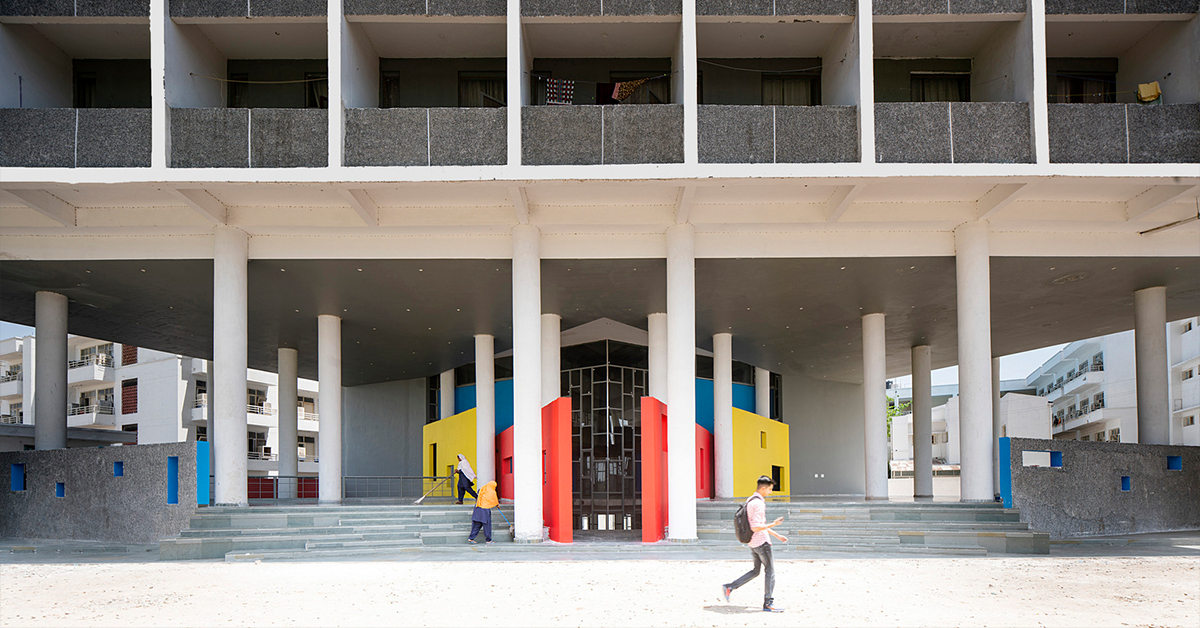Architects: Showcase your next project through Architizer and sign up for our inspirational newsletter.
Human beings are inherently connected with nature. Having spent 99% of our evolutionary history immersed in our natural surroundings, we humans have an in-built connectedness to the natural world. This deep relationship with our environment can be understood through the concept of biophilia. In 2021, the average person spends 90% of their time indoors. The biophilia hypothesis suggests that the shift from outdoor living for most of our history until today has had a catastrophically negative impact on our emotional and physical wellness, including reducing our overall life expectancy and increasing the rapid spread of disease.
Much research exists outlining the benefits of biophilic design, and the positive results gleaned from the practice are unquestionable. Being surrounded by natural elements improves our mental health and increases our productivity, and has a marked effect on our physical well-being. Designers and architects are beginning to understand that a strong connection to nature is beneficial and necessary for safe, productive, and healthy living.
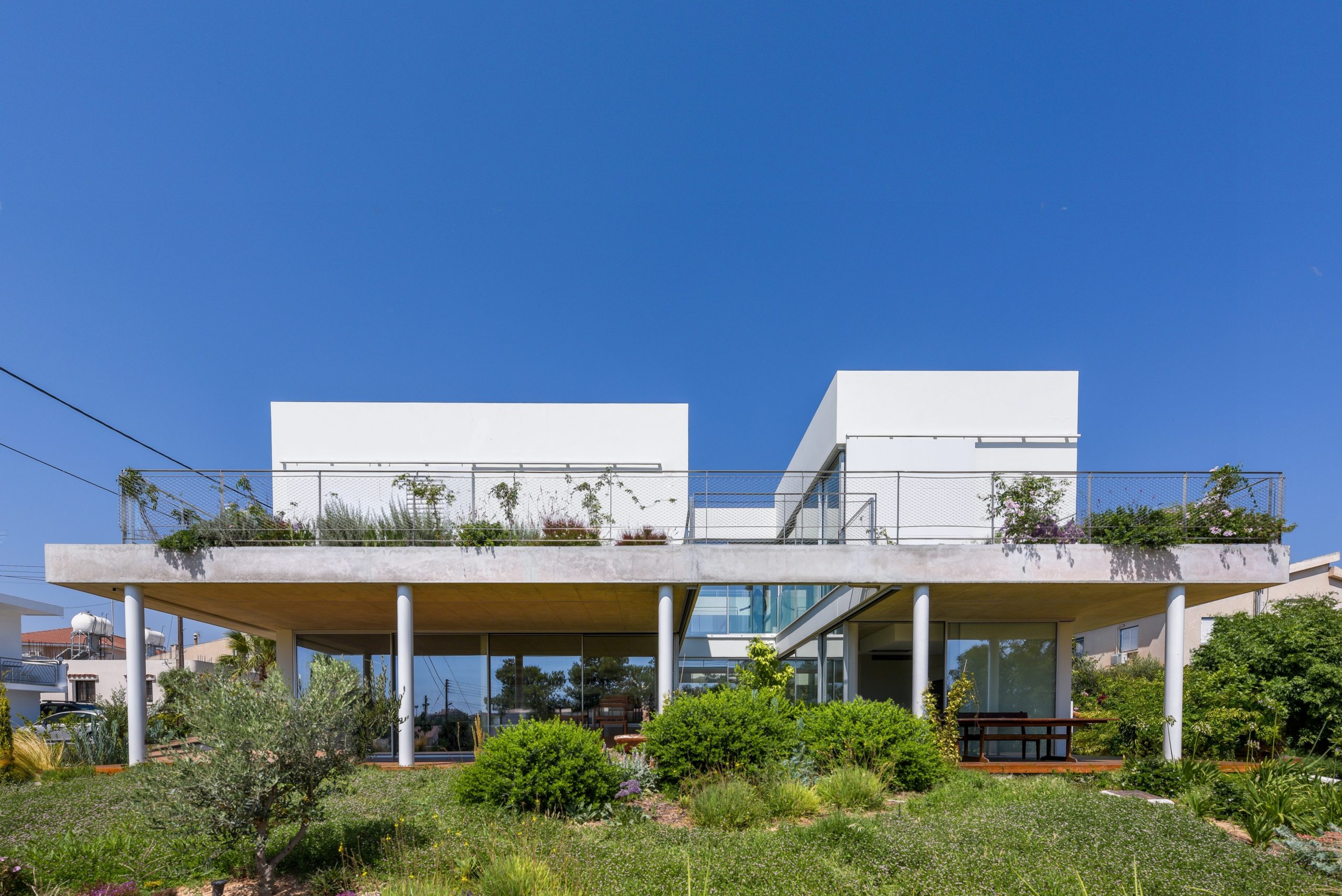
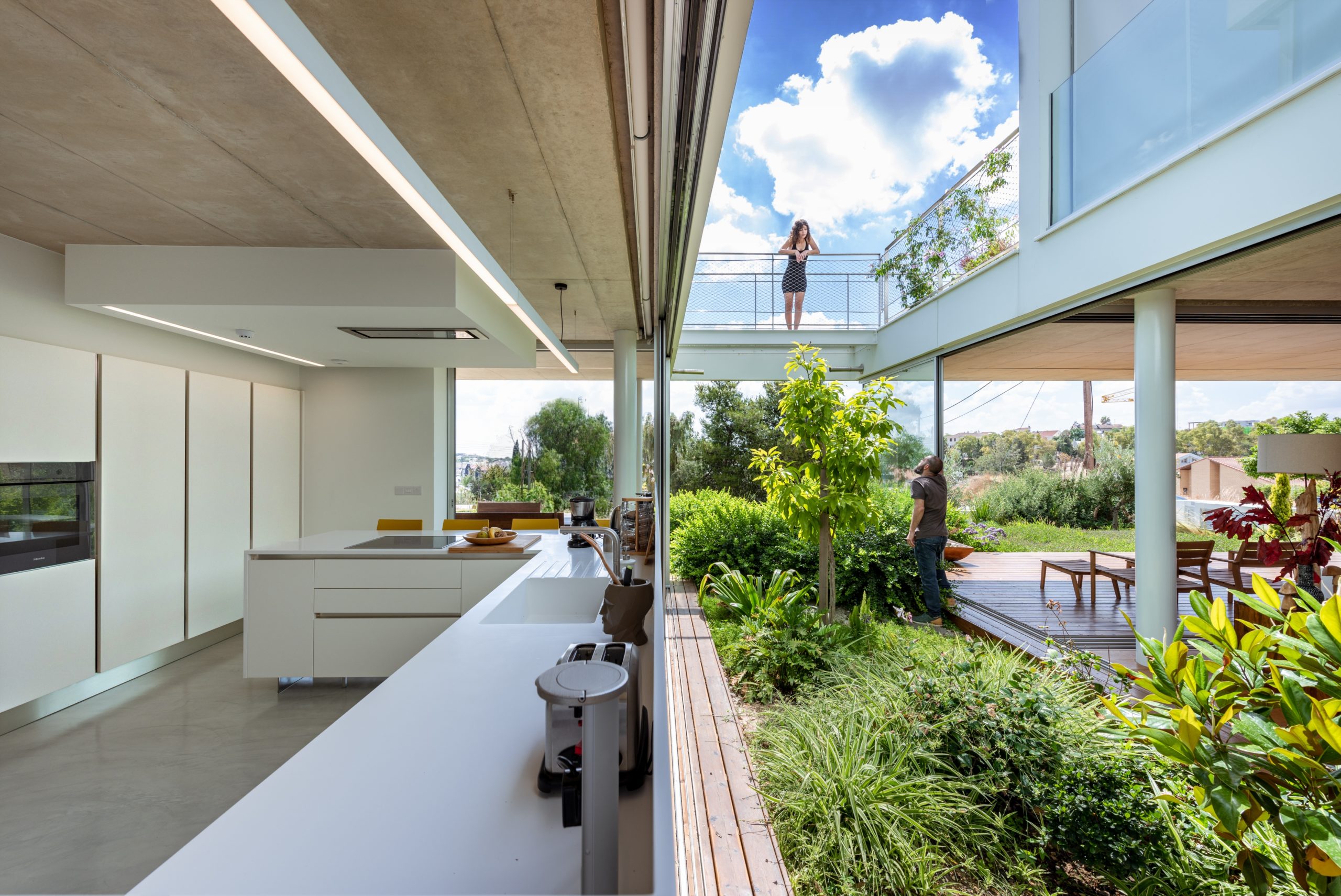
The Garden House in the City by Christos Pavlou Architecture, Nicosia, Cyprus. Jury & Popular Winner, 2020 A+Awards, Residential Interior
In architectural design, biophilia is rapidly becoming a principal design consideration when embarking on a project. The extensive list of benefits that being in and around nature has on humans’ well-being is well documented. A wealth of information has established a solid foundation for the practice, while numerous new technologies for its widespread implementation have been invented and have yet to be explored. The progression of understanding provides a huge opportunity to implement positive lasting change in fascinating and intelligent ways.
Following the events of the last year and feeling a need to accelerate incorporating nature into cities in creative ways, the architect has looked closely at the relationship between urban space and the human need for nature. The result is a space that connects the user to nature in the form of plant life, but the large home explores how we can retain green space in a modern, urban environment. These positive attributes are exemplified by The Garden House — an A+Award-winning design and an accomplished instance of biophilia in action.
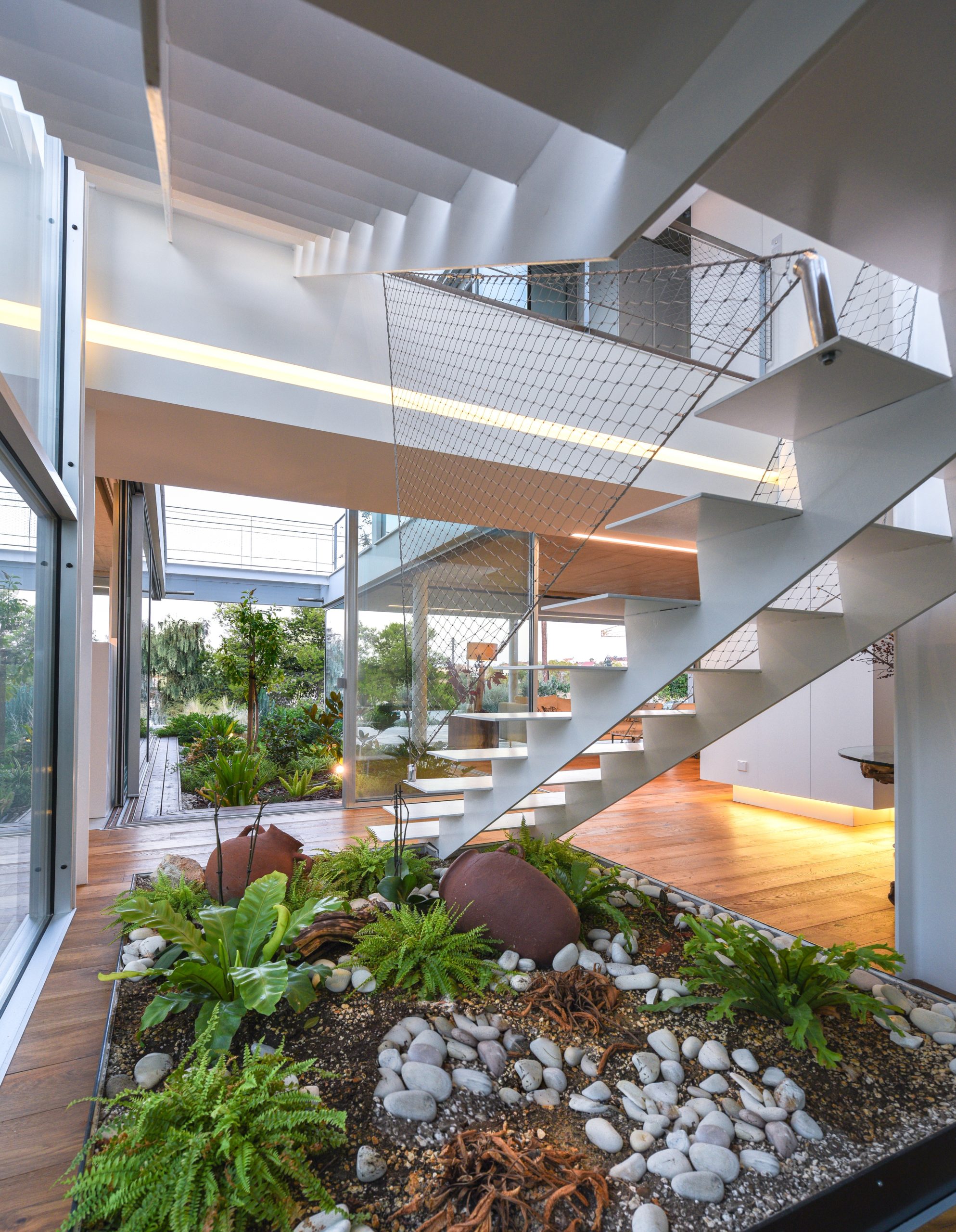
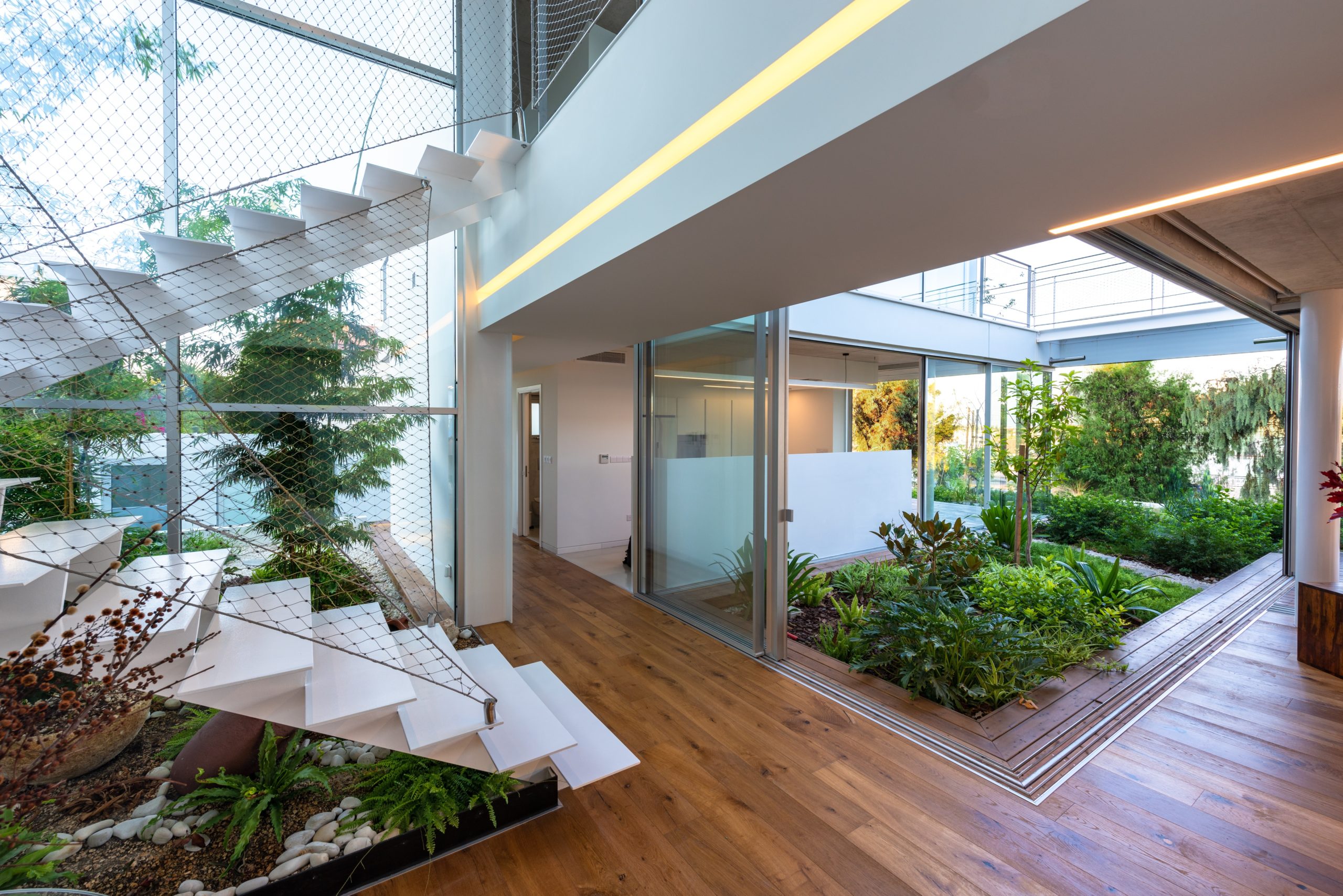 It has been noted that mortality rates and respiratory conditions are significantly lower in cities and even specific neighborhoods with implemented or retained green space. For this reason and more, it is vital for the continued growth of the urban landscape that a balance between architecture and nature is met. The Garden House in the City is integrated along the border of a public park; its private garden blends seamlessly with the green public landscape and is delineated only by a public footpath. The architects allow greenery to surround the building by splitting the mass in two and encouraging the flow of vegetation to draw into a central courtyard while providing an opportunity for a beautiful atrium.
It has been noted that mortality rates and respiratory conditions are significantly lower in cities and even specific neighborhoods with implemented or retained green space. For this reason and more, it is vital for the continued growth of the urban landscape that a balance between architecture and nature is met. The Garden House in the City is integrated along the border of a public park; its private garden blends seamlessly with the green public landscape and is delineated only by a public footpath. The architects allow greenery to surround the building by splitting the mass in two and encouraging the flow of vegetation to draw into a central courtyard while providing an opportunity for a beautiful atrium.
The introduction of sliding glazed partitions throughout the house allows the outside greenery to dress the interior design. The building is a clean and uncluttered concrete-based home with an open plan interior and timeless wooden floors. A wide variety of plant life gives these simple spaces vibrancy. Trees, bushes, flowers and succulents makeup all the surrounding spaces and are framed perfectly by floor-to-ceiling windows.
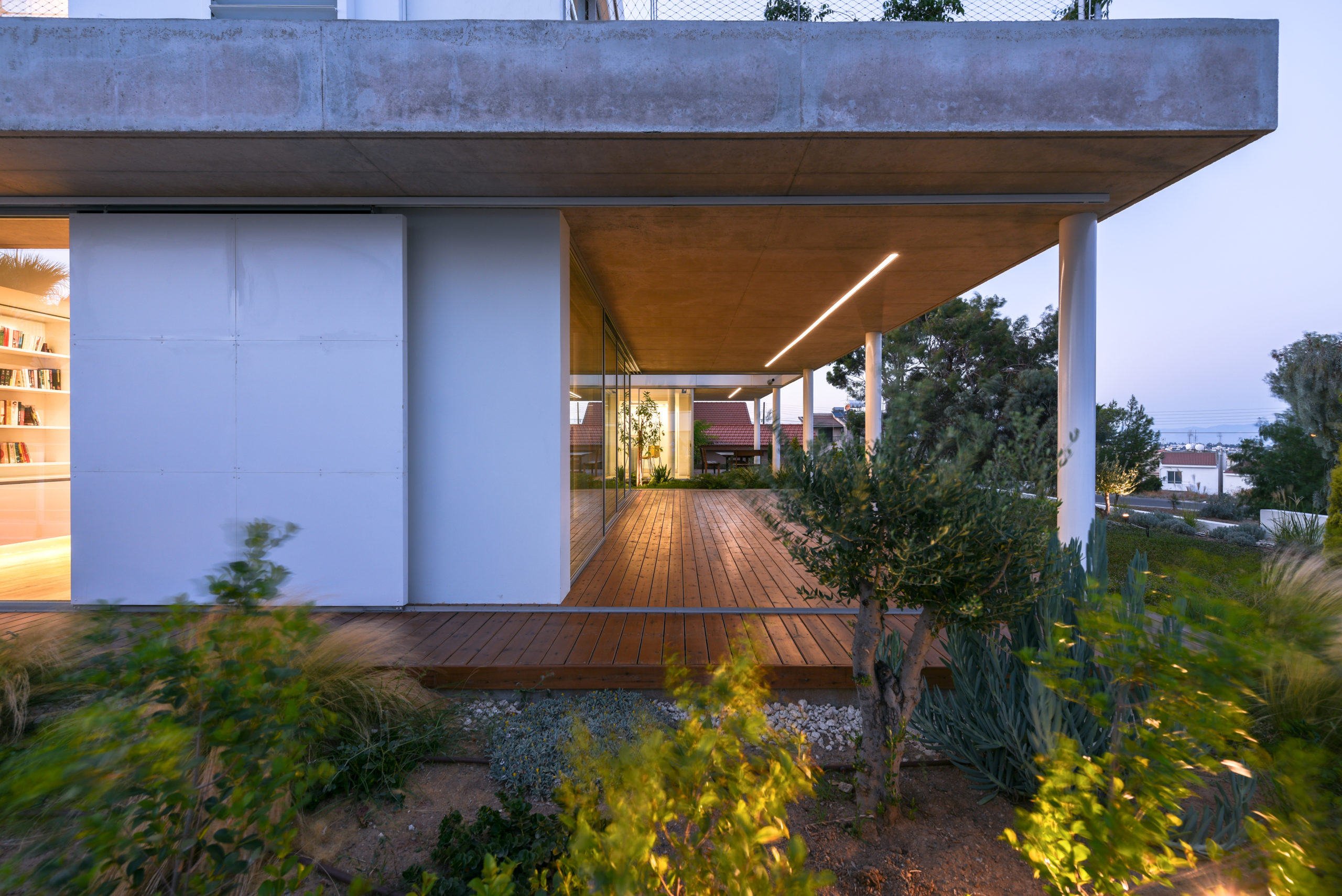 Christos Pavlou Architecture ensured the space they created has a positive impact on the individual occupants and a positive impact on the surrounding environment. 60% of the ground floor is made up of gardens, while a wrap-around green terrace makes up a large part of the first floor. Bee-friendly landscapes and forty different types of native wildflowers encourage local wildlife to the area, which will continue to increase the site’s biodiversity for years to come.
Christos Pavlou Architecture ensured the space they created has a positive impact on the individual occupants and a positive impact on the surrounding environment. 60% of the ground floor is made up of gardens, while a wrap-around green terrace makes up a large part of the first floor. Bee-friendly landscapes and forty different types of native wildflowers encourage local wildlife to the area, which will continue to increase the site’s biodiversity for years to come.
The urban landscape is rapidly growing to accommodate our city-dwelling ambitions. While architecture is being constructed at ever-increasing rates, the need to incorporate greenery and recognize the importance of understanding biophilia and biophilic design is essential. From urban planning to interior design, the responsibility to improve the quality of life of the people we design for becomes more critical every day. It is essential to embrace the opportunity to reverse past mistakes and protect our well-being for the future.
Architects: Showcase your next project through Architizer and sign up for our inspirational newsletter.
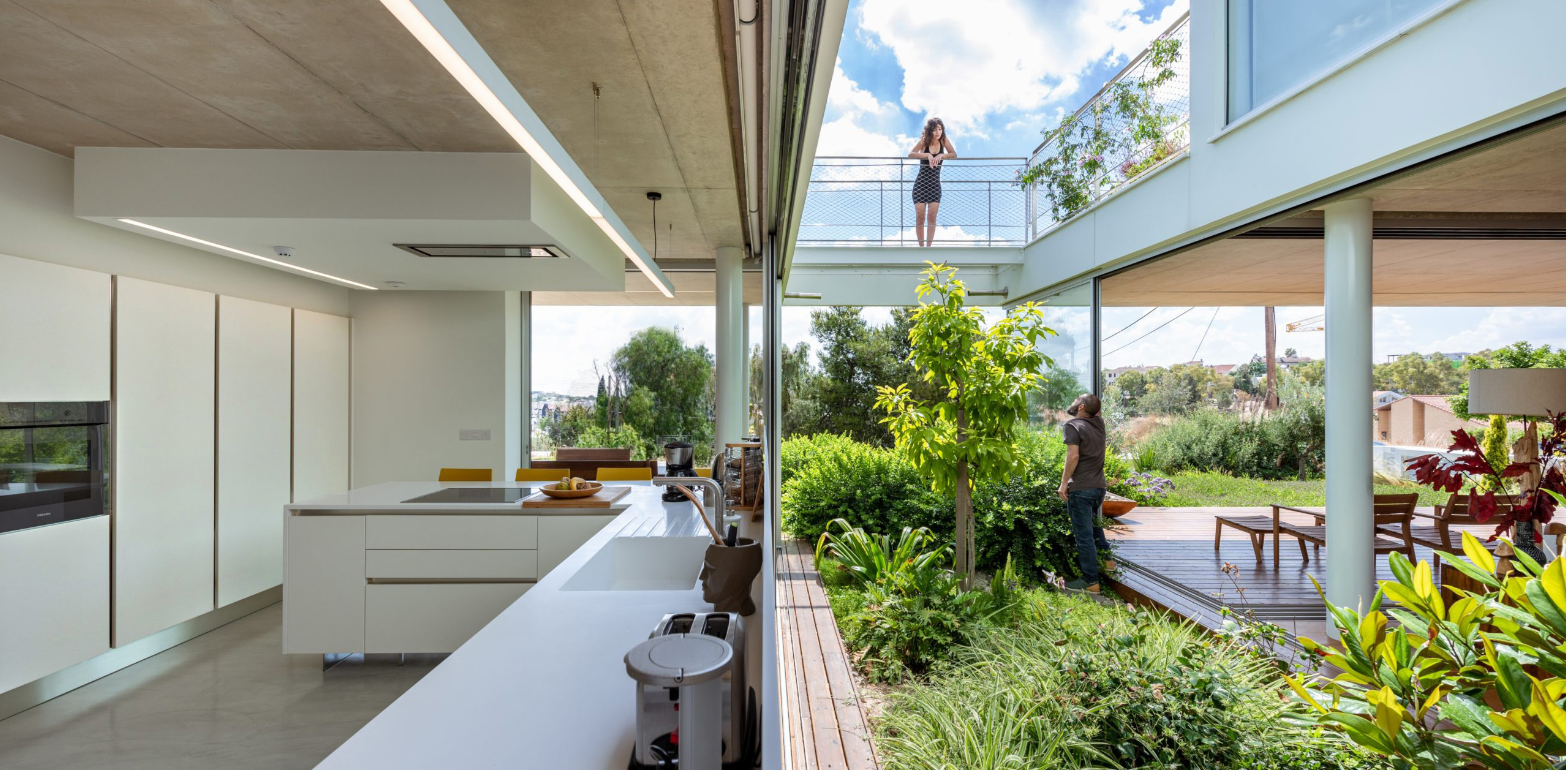
 The garden house in the city
The garden house in the city 